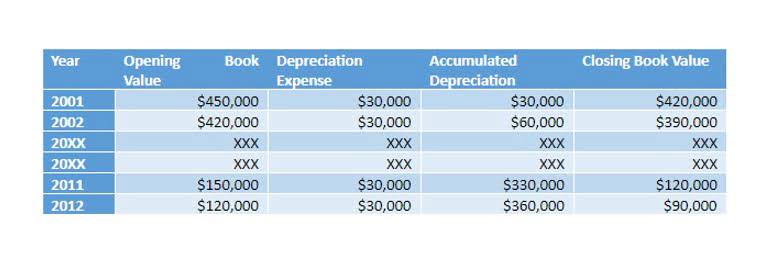
They may offer discounts for early payment as an incentive or impose interest on late payments to discourage delinquency. Trade payables is the money that a business owes its suppliers for items procured on credit terms. These liabilities arise How to Run Payroll for Restaurants due to purchases of inventory, materials, utilities, rent etc. made from trade creditors. If they relate to operational business expenses, then they need to be settled within a month.

Accounts Payable Process
- Some valuable items that cannot be measured and expressed in dollars include the company’s outstanding reputation, its customer base, the value of successful consumer brands, and its management team.
- Centralizing all purchase orders and invoices into a single system helps maintain control, reduce errors, and streamline audit trails.
- A higher DPO signals stronger liquidity but may strain vendor relationships; a lower DPO means quicker payments but tighter cash.
- The buyer, in turn, agrees to pay the financial institution the total invoice value on the agreed due date.
- Here, too, each company must establish procedures and controls and be in compliance with Internal Revenue Service (IRS) rules which can be found at
- The advent of technology and automation has revolutionized this domain, transforming it from a traditionally manual and error-prone process into a streamlined and strategic function.
- For instance, employee wages, while part of your everyday operational costs, are not counted among trade payables.
By calculating the sum of the accounts payable balance in the current and prior year, and then dividing by two, we arrive at 70 days and 75 days in 2021 and 2022, respectively. From a supplier’s point of view, the accrual basis of accounting treatment is more favorable. It recognizes the expense on the supplier’s income statement when the goods or services were provided, even if the payment has not yet been received. This provides a more accurate reflection of the supplier’s revenue and profitability. Insurance Expense, Wages Expense, Advertising Expense, Interest Expense are expenses matched with the period of time in the heading of the income statement. Under the accrual basis of accounting, the matching is NOT based on the date that the expenses are paid.
A. Key Audit Procedures for Accruals

They what are trade payables represent a source of short-term financing that can help businesses manage their cash flow. Understanding the impact of trade payables on a business’s financial statements is critical for making informed financial decisions. One of the main financial statements (along with the statement of comprehensive income, balance sheet, statement of cash flows, and statement of stockholders’ equity). The income statement is also referred to as the profit and loss statement, P&L, statement of income, and the statement of operations. The income statement reports the revenues, gains, expenses, losses, net income and other totals for the period of time shown in the heading of the statement. If a company’s stock is publicly traded, earnings per share must appear on the face of the income statement.
What Are Accounts Payable (AP)?
- Only a paltry 5% of businesses assert that they always pay their obligations on time, whereas one in 12 firms never monitors its payments processes at all.
- Here we’ll get to know trade payables, how they differ from their opposite (trade receivables) and how to account for them properly to ensure harmonious cash flow.
- Instead, the cost is recorded in a balance sheet asset account and will be expensed in increments during the asset’s useful life.
- Accounts receivable is an asset and represents the money owed to a company from customers that bought goods or services on credit.
- These aren’t just accounting entries; they’re the lifeblood of vendor relationships, cash flow, and procurement strategy.
- Trade payables help businesses like ABC Bakery manage cash flow while maintaining good supplier relationships and operational flexibility.
At the same time, an accounts receivable asset account is created on the company’s balance sheet. When you actually pay your bill in March, the accounts receivable account is reduced, and the company’s cash account goes up. On the other hand, Accounts Payable includes all short-term liabilities, not just those related to trade. This means they can cover other expenses like rent, utilities, how is sales tax calculated or office supplies.
- Trade payables play a pivotal role in the management of a company’s working capital and liquidity.
- Another risk is the possibility of missed payments, which can damage a business’s relationship with its suppliers.
- Trade Payable is more complex as it directly impacts inventory, production cycles, and supply chain management.
- Payment to the supplier should be made at the appropriate time in order take advantage of any discount being offered by the supplier for early settlement.
- In the next section of our exercise, we’ll forecast our company’s accounts payable balance for the next five periods.
- The accounts payable process starts with a purchase order from the business to the supplier.
- A receiving report is a company’s documentation of the goods it has received.
HighRadius Named as a Leader in the 2024 Gartner® Magic Quadrant™ for Invoice-to-Cash Applications
These obligations arise from transactions related to a company’s ordinary operating activities, such as buying raw materials, inventory, or essential supplies. This arrangement allows businesses to acquire necessary items immediately and pay for them later, typically within a short credit period like 30, 60, or 90 days. A trade payable is an amount billed to a company by its suppliers for goods delivered to or services consumed by the company in the ordinary course of business. These billed amounts, if paid on credit, are entered in the accounts payable module of a company’s accounting software, after which they appear in the accounts payable aging report until they are paid.

Streamlining Supplier Relationships

Trade payables help businesses like ABC Bakery manage cash flow while maintaining good supplier relationships and operational flexibility. A trade payable is the amount a business owes a supplier for goods or services purchased on credit but not yet paid for. These obligations arise whenever you take delivery of products or services and agree to pay later. If a business habitually delays payments beyond agreed terms, it can strain supplier relationships or even lead to service disruptions. Suppliers may begin demanding upfront payments or stop doing business altogether.
- Efficient management ensures that the company can meet its obligations without compromising its financial position.
- Like trade payables, they are logged only when sales are made on credit, i.e. the goods have been delivered but payment has not yet been made in full.
- By leveraging accounts payable automation, businesses can streamline processes, improve accuracy, and enhance cash flow management.
- In this guide, we’ll break down these terms and their impact on your daily financial operations.
- The payment date is based on the terms shown on the invoice and the company’s policy for making payments.
- Conversely, from the buyer’s perspective, shorter payment terms can be advantageous for maintaining a healthy cash flow, but they may limit the ability to invest in growth opportunities.
By embracing these trends, businesses can not only improve their financial health but also contribute to a more sustainable and efficient global trade ecosystem. The key will be to remain adaptable and forward-thinking, leveraging the latest technologies and practices to stay competitive in a dynamic economic landscape. Technology and automation are not just enhancing the efficiency of trade payable management; they are redefining the role it plays within the broader scope of business operations. As these technologies continue to evolve, we can expect even greater advancements in the way companies manage their trade payables.
